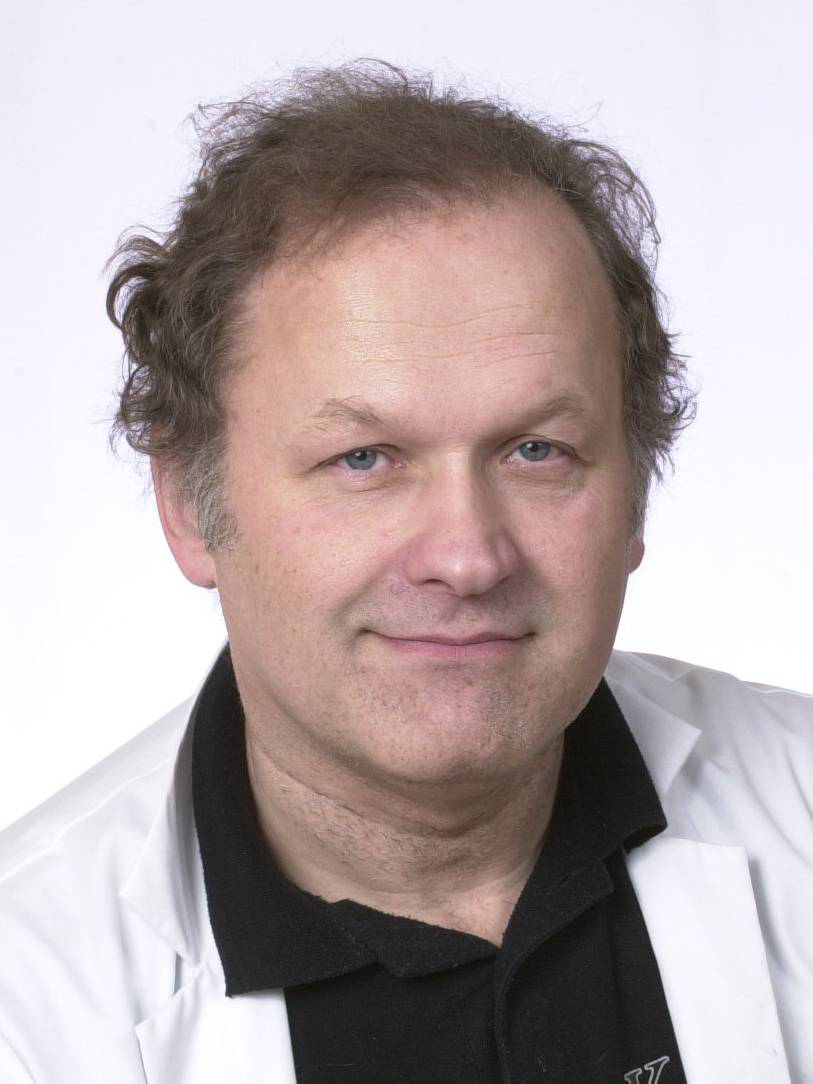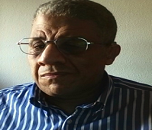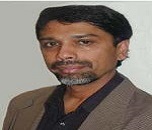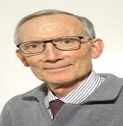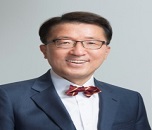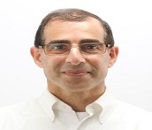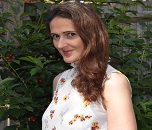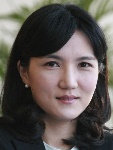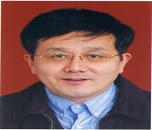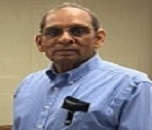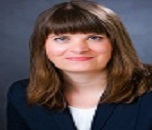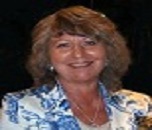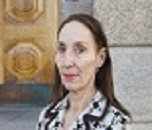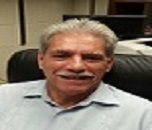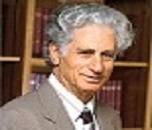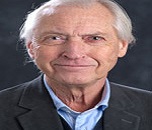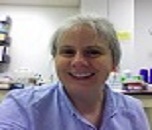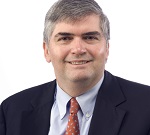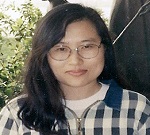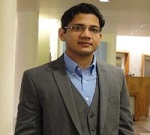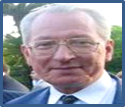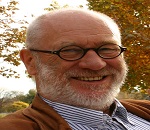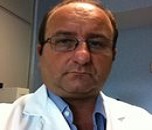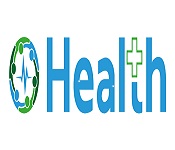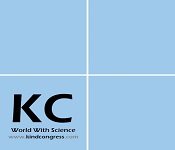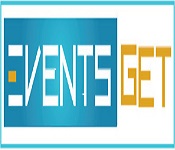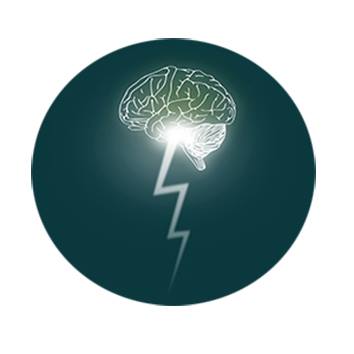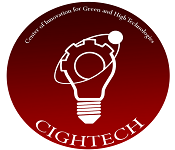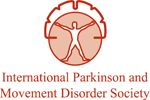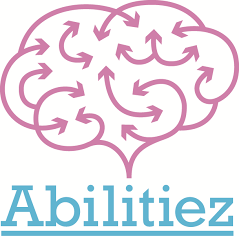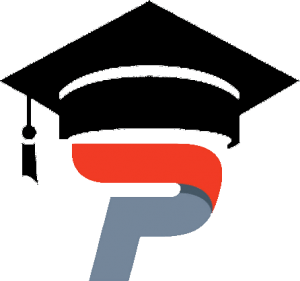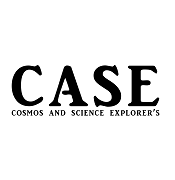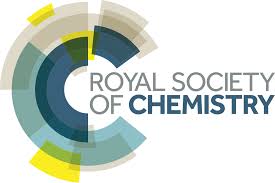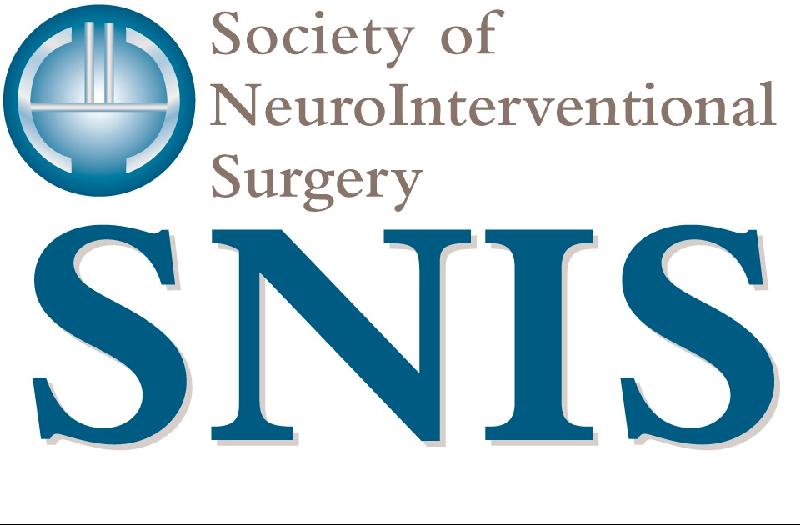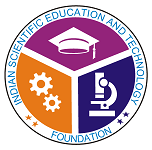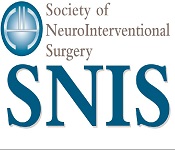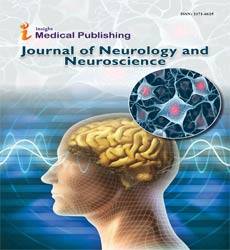Theme: Challenges & Breakthroughs in Neurosciences
Neuroscience Congress 2018
- About Neuroscience Congress 2018
- Sessions/Tracks
- Market Analysis
- New Updates : Neuroscience Congress 2018
- Past Conference Report
Neuroscience Congress 2018
Neuroscience Congress 2018 invites all the participants from all over the world to attend 25th International Conference on 25th International Conference on Neurology: Neurochemistry, Neuropharmacology and Neurosciences during September 17-18, 2018 in Dubai, UAE. which includes prompt keynote presentations, Oral talks, Poster presentations, Workshops and Exhibitions.
Why to attend???
With members from around the world focused on learning about neuropharmacology and its advances; this is your best opportunity to reach the largest assemblage of participants from the Neurology & Neuroscience community conduct presentations, distribute information, meet with current and potential scientists, make a splash with new drug developments, and receive name recognition at this 2-day event. World-renowned speakers, the most recent techniques, developments, and the newest updates in Neurochemistry & Neuropharmacology are hallmarks of this conference.
Target Audience:
- Neurologists
- Neuro Surgeons
- Neuroscience professors
- Neurochemistry Students
- Neurochemistry Scientists
- Neurochemistry Researchers
- Neurochemistry Faculty
- Medical Colleges
- Neurochemistry Associations and Societies
- Manufacturing Medical Devices Companies
- Neuropharmacology Students
- Neuropharmacology Scientists
- Neuropharmacology Researchers
- Neuropharmacology Faculty
- Neuropharmacology Associations and Societies
- Business Entrepreneurs
- Training Institutes
2018 Highlights:
- 300+ Participation (70 Industry: 30 Academia)
- 5+ Keynote Speakers
- 50+ Plenary Speakers
- 14 Innovative Educational Sessions
- 5+ Workshops
- B2B Meetings
Highlights of latest advances on 25th International Conference on Neurology: Neurochemistry, Neuropharmacology and Neurosciences
Track 1: Neurochemistry
Neurochemistry deals with the processes happening in nervous system and nerve tissues. One of these processes is Neurotransmission, wherein, the interaction at the synapse occurs with the help of neurotransmitters such as Dopamine, Acetylcholine, Norepinephrine, Glutamate, Serotonin, Gamma-aminobutyric acid (GABA), Endogenous opioids etc. The activity of ion channels assists neurotransmitter receptors to receive the signals. This mechanism is altered by the many drugs, as a treatment process of neurological disorders.
The global sales of drugs to treat progressive dementia with other neurological abnormalities expected to reach $537.2 million in 2012 and $913.7 million by 2017, at a CAGR of 11.2% over the five-year forecast period. These are the chemicals introduced into the Photoswitchable ligands into ion channels stirrups the possible ways of diverse roles of neurotransmitters and receptors in the nervous system
- Chemical Neurobiology
- Molecular Mechanisms & Regulation of Nervous System
- Molecular and Cellular neurochemistry
- Immuno neurochemistry
- Neuroinflammation
- Key Aspects of Neurochemistry
- Clinical Studies, Biomarkers and Imaging
- Neurotransmitters and signalling molecule
Track 2: Neuropharmacology
The neuropharmacology will discuss the drug-induced changes in functioning of the nervous system. The specific focus of this course will be to provide a description of the cellular and molecular actions of drugs on synaptic transmission. This course will also refer to specific diseases of the nervous system and their treatment in addition to giving an overview of the techniques used for the study of neuropharmacology.
- Neurochemical transmission
- Pediatric Neuropharmacology
- Neuroimmunology &Neuroinflammation
- Neuroethics
- Clinical Neuropharmacology of pain
- Clinical Neuropharmacology of drug abuse
- Therapeutics and Clinical Neuropharmacology
- Therapeutics for specific syndromes and symptoms in Clinical Neuropharmacology
- Hypothalamic releasing factors of Clinical Neuropharmacology
Track 3: Neuroscience
The human brain remains a great mystery in science and current research strives to understand molecular and cellular processes of the nervous system. Prevention and effective treatment of neurological disorders like Alzheimer's and Parkinson's diseases has been a major medical challenge. Neurology is the enclosure of medical research and practices that devoirs disorders and issues of the nervous system, including the brain. Doctors specialized in diagnosing patients and their problems whereas neurology nurses are one who trained to aid these doctors in the treatment of patients with neurological issues. Neurology nurse deals with giving both post-operative care and immediate care. Various conditions Like Parkinson’s disease, brain tumours, encephalitis, multiple sclerosis and meningitis, as well as those who have suffered from trauma, such as neurology victims and those who have had spinal or brain
- Neuroinflammation in neurodegenerative diseases
- Brain Patterning & Brain Mapping
- Neurophysiology
- NeuroRehabilitation
- Neuroscience: Explorations into Brain Function
- Neurodegenerative disorders and Neurocritical Care
- Cognitive & Behavioral Neuroscience
- Nursing and Neuroscience
- Computational Neuroscience: Trends in Research
- Clinical Trials and Case Reports
Track 4: Neurosurgery
Neurosurgery is the surgical specialization that treats diseases and disorders of the brain and spinal cord. Back pain can sometimes produce neurological symptoms such as numbness, muscle weakness, and loss of bowel and bladder control due to dysfunction at the nerve root.
These symptoms are indicators that neurosurgery is required to treat the underlying cause of back pain as opposed to conservative treatments. Procedures to treat back pain under the realm of neurosurgery include discectomy, laminectomy, and spinal fusion surgery.
In Neurosurgery, there is a higher risk of further nerve damage and infection which may result in paralysis.
In Neurosurgery, there is a higher risk of further nerve damage and infection which may result in paralysis.
- Stereotactic, Functional Pain and Epilepsy Surgery
- Peripheral Nerve Surgery
- Pediatric Neurosurgery
- Neurovascular Surgery
- Experimental and Anatomy Research
- Cranial Surgery
- Traumatic brain injuries
- Neuroimaging, biomarkers and laboratory studies
- Modern Stereotactic Neurosurgery
- Neuromodulation Surgery for Psychiatric Disorders
- Stereotactic Neurosurgery
Track 5: Neurological & Neurosurgical Nursing
Nursing is a very challenging specialty that deals with assessment and management of many neurological disorders. Mostly the Neuroscience Nursing professionals assist patients with nervous system and brain disorders. Some of their responsibilities include administering medication, monitoring neurological exams, consulting physicians on patient progress etc. Basically the nurses provide patient care for Neurological complications like trauma, stroke, brain injuries, headaches, seizures, infections and aneurysms etc.
- Nursing Skills
- Pediatric Nursing
- Neurosurgical Nursing
- Critical Care Nursing
- Cancer Nursing
- Clinical Nursing
- Healthcare Nursing
- Nursing Management
Track 6: Neuro oncology
The Central Nervous System is denounced to various Malevolent disorders. Central Nervous System covers its mechanism, Metastatic pestilence, Ramification, Cancers, Neurons and Sensory Receptors, Neurological Disorders, Neurodegenerative disease and Imaging agents to CNS neurofibroma. Cancer spreads to the Nervous System by direct invasion or compression from continuous tissues relates to the proximity of the Nervous System to other structures.
Global Central Nervous System Drugs market to grow at a CAGR of -3.2% over the period 2011-2015. The global central nervous system (CNS) therapeutics peddle has been forecast to reach US$133 billion by the year 2018, which increases in disease ubiquity rates due to increase in population, the introduction of new drugs, and increased outgo on healthcare.
- Emerging Concepts in Neuro-Oncology
- Radiation neuro-oncology
- Pediatric neuro-oncology
- Central Nervous System
- Neurodegenerative disorders and Injury
- Motor Neuron Disease
- CNS lymphoma
- Neurosarcoidosis
- Meningitis and Encephalitis
- Progressive Multifocal Leukoencephalopathy
- Transverse Myelitis
- Types of pain in Neuro-Oncology
- Pathophysiology in Neuro-Oncology
- Brain Injury Rehabilitation
Track 7: Neuroimaging in Psychiatry
Neuroimaging is the mapping of the human brain using functional Magnetic Resonance Imaging (fMRI). Neuroimaging determines the association between Environmental factors and health influence on Brain ageing throughout the adult lifespan. It determines how difference and change in Cerebral structure, complexly relates to Behavior and Cognition at Multiple levels of Analysis
It brings together various topics of interests such as Functional Neuroimaging, , Neuropsychology and Cognitive Neuroscience, Computational Modeling
- Neurobiotics
- Neural Tissue Engineering
- Operating techniques of Imaging Devices
- Interventional Radiology
- Brain mapping
- Recent Neural Imaging Modalities
- Cross-cultural Psychiatry
- Biological Psychiatry
- Community Psychiatry
- Molecular Psychiatry
- Clinical Psychiatry
Track 8: Neuroinformatics
Neuroinformatics is an examination field worried with the association of neuroscience information by the use of computational models and explanatory apparatuses. These territories of research are critical for the coordination and investigation of progressively extensive volume, high-dimensional, and fine-grain exploratory information. Neuroinformaticians give computational instruments, scientific models, and make interoperable databases for clinicians and research researchers. Neuroscience is a heterogeneous field, comprising of numerous and different sub-disciplines (e.g., Cognitive Psychology, behavioral neuroscience, and behavioral hereditary qualities). All together for our comprehension of the mind to keep on deepening, it is fundamental that these sub-orders can share information and discoveries, definitively Neuroinformaticians encourage this Neuroinformatics remains at the convergence of neuroscience and data science.
- Computational Neuroscience
- Neural Computation
- Neuroengineering
- Brain Informatics
- Analysis and modeling of CNS and neuronal system
Track 9: Stroke & Neurological Disorders
A stroke is a restorative crisis. stroke happens when bloodstream to your mind stops. Inside minutes, cerebrum cells start to kick the bucket. There are two sorts of stroke. The more normal kind, called ischemic stroke, is created by a blood coagulation that squares or attachments a vein in the cerebrum. The other kind, called hemorrhagic stroke, is brought on by a vein that breaks and seeps into the cerebrum. "Smaller than normal strokes" or transient ischemic assaults (TIAs), happen when the blood supply to the cerebrum has quickly interfered. Stroke is the third driving reason for death in the United States. Of the more than 700,000 individuals influenced each year, around 500,000 of these are first assaults, and 200,000 are intermittent. Around 25 percent of individuals who recuperate from their first stroke will have another stroke inside five years. Stroke is the main source of genuine long haul handicap, with an expected 5.4 million stroke survivors presently alive today. The American Heart Association assesses that in 2003, stroke cost
- Cardiac Complications of Neuromuscular Disorder
- Lambert-Eaton syndrome
- Myasthenia
- Brain Disorders
- Neurodegenerative diseases
- Traumatic brain injuries
- Narcolepsy
Track 10: Heart and Brain
Most of us have been taught in school that the heart is constantly responding to “orders” sent by the brain in the form of neural signals. However, it is not as commonly known that the heart actually sends more signals to the brain than the brain sends to the heart! Moreover, these heart signals have a significant effect on brain function—influencing emotional processing as well as higher cognitive faculties such as attention, perception, memory, and problem-solving. In other words, not only does the heart respond to the brain, but the brain continuously responds to the heart.
The effect of heart activity on brain function has been researched extensively over about the past 40 years. Earlier research mainly examined the effects of heart activity occurring on a very short time scale—over several consecutive heartbeats at maximum. Scientists at the HeartMath Institute have extended this body of scientific research by looking at how larger-scale patterns of heart activity affect the brain’s functioning.
- Heart Failure and Brain Health
- Heart Diseases and Cardiac Arrest
- Pediatric and Geriatric Cardiology
- Cardiac Nursing and Health Care
- Cardiovascular Research and Hypertension
Track 11: Neuro Immunology
Neuroimmunology refers to the interdisciplinary field merging neurology, immunology, and aspects of neuroscience. It is a scientific and clinical domain. Scientifically, neuroimmunology tries to understand the bidirectional links between the nervous and immune systems, and their implications to illnesses. Multiple Sclerosis and Related Disorders is a priceless expansion to the writing and will be of critical enthusiasm to neurologists, inhabitants and colleagues, internists, and general professionals who treat patients having a neurologic issue and other systemic immune system illnesses.
- Neural stem cell fate
- Neurodevelopmental disorders
- Neurodegenerative disorders
- Neuroimmunological disorders
- Hippocampus neuroinflammatory response
Track 12: Neurological Nursing
Nursing is a very challenging specialty that deals with assessment and management of many neurological disorders. Mostly the Neuroscience Nursing professionals assists patients with nervous system and brain disorders. Some of their responsibilities include administering medication, monitoring neurological exams, consulting physicians on patient progress etc. Basically the nurses provide patient care for Neurological complications like stroke, brain injuries, headaches, seizures, infections and a aneurysms etc.
Track 13: Computational Neurology
Computational neuroscience is the study of brain function in terms of the information processing properties of the structures that make up the nervous system. It is an interdisciplinary science that links the diverse fields of neuroscience, cognitive science, and psychology with electrical engineering, computer science, mathematics and physics.
Computational neuroscience is distinct from psychological connectionism and machine learning in that it emphasizes descriptions of functional and biologically realistic neurons (and neural systems) and their physiology and dynamics. These models capture the essential features of the biological system at multiple spatial-temporal scales, from membrane currents, protein and chemical coupling to network oscillations, columnar and topographic architecture and learning and memory.
These computational models are used to frame hypotheses that can be directly tested by current or future biological and/or psychological experiments.
- Single-neuron modeling
- Development, axonal patterning, and guidance
- Sensory processing
- Memory and synaptic plasticity
- Behaviors of networks
Track 14: Clinical Interventions & Case Reports
Recent clinical studies have shown that between half-hour and hour of drug abusers have mental state diagnoses Depression, schizophrenic psychosis, and manic disorders. Drug addiction may be typical of disorder involves the interaction of environmental factors and genetic factors to extend the susceptibility of an individual to addictive behavior. SAMHA scientist’s area unit working on the pharmacological and neuropsychoslogical models and approaches that involve pre-symptomatic studies and clinical findings, to elucidate the results of mental health and physical disorders and outcomes in drug-addicts, Researchers specialize in pregnant women smokes cigarettes. Tobacco usage elevates therapeutic and behavioral therapies in smokers with synchronous psychiatrically disorders
- Ageâ€associated memory impairment
- Ongoing Clinical trails in neurology
- Health care reports
- Case reports on neurosurgery
- Pharmacology Resident Case Studies
Track 15: Neurotransmitters
These are the brain chemicals that connect the brain and the body. They transmit signals between nerve cells, called neurons. They can also affect mood, sleep, concentration, weight, and can cause adverse symptoms when they are out of balance. These are of two types: Inhibitory and Excitatory. Acetylcholine, Glutamine, and GABA are some of these neurotransmitters.
- Synapse formation and neurotransmitter receptors
- Synaptic architecture
- Intracellular trafficking and protein dynamics
- Pre- and post-synaptic function
- Synaptic plasticity and memory
- Neuronal circuits in the healthy and diseased brain
- Molecular mechanisms of neuropsychiatric disorders
Hospitals
Neuroscience Congress 2017 welcomes attendees, presenters, and exhibitors from all over the world to Dubai ,UAE .We are delighted to invite you all to attend and register for the 25th International Conference on Neurology: Neurochemistry, Neuropharmacology and Neuroscience which is going to be held September 17-18,2018 in Dubai, UAE. The organizing committee is gearing up for an exciting and informative conference program including plenary lectures, symposia, workshops on a variety of topics, poster presentations and various programs for participants from all over the world. We invite you to join us at the Neurochemistry Congress 2018 where you will be sure to have a meaningful experience with scholars from around the world. All the members of Neurochemistry and Neuropharmacology 2018 organizing committee look forward to meeting you at Dubai,UAE
For more details please visit- https://neurochemistry.neurologyconference.com/
Importance and Scope 25th International Conference on Neurology: Neurochemistry, Neuropharmacology and Neurosciences is the study of how drugs influence cellular function in the nervous system, and the neural mechanisms through which they influence behavior. The studies are more concerned with the interactions of neurotransmitters, neuropeptides, neurohormones, neuromodulators, enzymes, second messengers, cotransporters, ion channels, and receptor proteins in the central and peripheral nervous systems. Advanced studies are being made to improvise developments in drugs to treat numerous diverse neurological disorders, including neurodegenerative diseases known to be Parkinson's disease and Alzheimer's disease, pain, addiction, psychological disorders and many more.
It is necessary to focus Neurochemistry and Neuropharmacology and the use of neuropharmaceuticals to transform brain processes in the way of enhancing memory, mood, sensation, thinking and attention in people.
Comparative analysis for Neurological Disorders (Age wise profile)

Conference Highlights
Neurological & Neurosurgical Nursing
Stroke & Neurological Disorders
Clinical Interventions & Case Reports
Hospitals of Neuropharmacology
Mayo Clinic, Rochester, Minnesota
Johns Hopkins Hospital, Baltimore, Maryland
Massachusetts General Hospital, Boston
University of California–San Francisco Medical Center
Mathodist Hospital, San Antonio
University of California–Los Angeles Medical Center
New York University Langone Medical Center, New York City
Hospitals of the University of Pennsylvania–Penn Presbyterian
Northwestern Memorial Hospital, Chicago
Baptist Medical Centre, San Antonio
Major Neurochemistry and Neuropharmacology Associations related around the Globe
ERA NET Neuran
Volkswagon Stifung Foundation
American National Science and Education Fund
Vienna science and Technology fund
Snota Restaviel National Science Foundation
CORDIS
Massachusetts General Hospital Bost
Duras Neuroscience Center Florida
UCLLA Brain Research Institute California
ASN, American Society for Neurochemistry
International Society for Neurochemistry (ISN)
European neurochemistry society
Asian-Pacific Society for Neurochemistry
Canadian Neurological Sciences Federation
European Parkinson’s disease Association
Malaysian Society of Neurosciences
Eurospine, The Spine Society Of Europe
The Spanish Society of Neurology (SEN)
The Czech Neuropsychopharmacological Society
Belgian Neurological Society
National Neurotrauma Society
National Parkinson'S Foundation
European Society Of Neurosonology And Cerebral Hemodynamics
Federation Of European Neuroscience Societies
Malaysian Society Of Neurosciences
ÄŒeská Neurologická SpoleÄnost
The Czech Neuropsychopharmacological Society
European Academy Of Neurology
Deutsche Gesellschaft Fur Neurologieologie
International Brain Research Organization
The Neuropathy Association
The Primary Care Neurology Society
The Spanish Society Of Neurology (SEN)
Major Neuropharmacology related Associations
International Neuroethics Society
Society for Behavioral Neuroendocrinology
Society For Neuroscience
American Psychological Association
International Parkinson and Movement Disorder Society
American Neurological Association
National Institute Of Environmental Health Sciences
The American Society of Neuroimaging
American Board Of Psychiatry And Neurology, Inc.
American Clinical Neurophysiology Society
International Neuropsychological Society
Southern Clinical Neurological Society
International Parkinson And Movement Disorder Society
Products for Neurological Treatments
This above statistic displays the global revenue of Abilify from Bristol-Myers Squibb from 2011 to 2014. In the United States alone, Abilify generated a revenue of 2.1 million U.S. dollars in 2012. Abilify is an antipsychotic agent that is used to treat various conditions such as schizophrenia, bipolar mania disorder, and major depressive disorder.
Gross Profit Margin of Neuropharmaceutical related companies
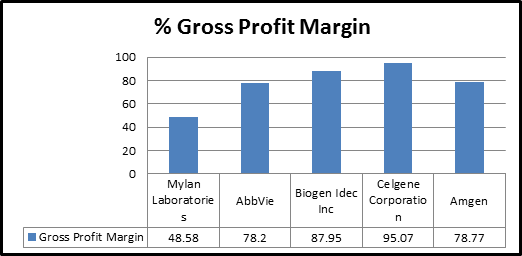
Market Capitalization of Neuropharmaceutical companies: In 2014, investors provided $3.3 billion into firms that are developing drugs for brain-destroying or psychiatric illnesses. Some big drug companies, including Johnson & Johnson, Roche and Novartis, are finding ways to reinvigorate their efforts. New medicines for severe depression, psychosis and schizophrenia could reach the market within the next few years, and treatments for Alzheimer’s, Parkinson’s and some forms of autism are a real possibility, too.
Sales Profile of Neuropharmaceutical companies
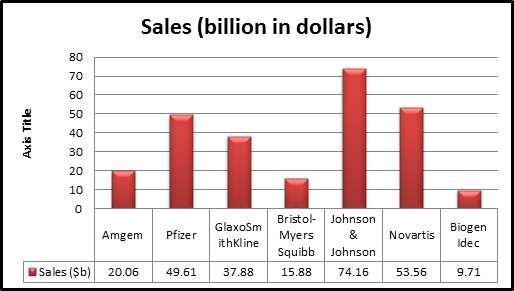
Research Fund: NIH (National Institute of Health) and NSFC (Nature Science Foundation of China) provided fund for the neurological disorders such as dementia, schizophrenia, stroke, parkinson’s, epilepsy.
Institutes funding for research
1) The US National Institutes of Health fund a Neuropharmacology Laboratory project, Universitat Pompeu Fabra, Barcelona
2) Neuropharmacology Program, The National Institute of Mental Health (NIMH)
3) McKnight Endowment Fund for Neuroscience
The statistic depicts the research and development expenditure of the entire pharmaceutical industry of the United States from 1995 to 2014. In 2004, the expenditure of the entire U.S. pharmaceutical industry on research and development came to 47.6 billion U.S. dollars.
Related Conferences
- International Conferences on Neurogenetics & Neurodegeneration August 13-14, 2018 Dubai.UAE
- International Conferences on Neuroncology & Neurosurgery September 20-21, 2018, Dubai.UAE
- World Neurone Diseases Congress September 13-15, 2018 Romania
- Neurodegenerative & Neuroinflammation From Discovery to Health October 18-20, 2018, Finland
- International Conferences on Psychiatry & Mental Health October 11-13, 2018, Dubai.UAE
- Annual Conferences on Dementia & Alzheimer's Disease December 13-15, 2018 Abu Dubai.UAE
- World Brain Congress December 05-07, 2018 Dubai.UAE
- 2nd International Nursing Conferences July 19-21, 2018 Dubai.UAE
- International Pharmaceutical Chemistry Conferences July 19-21, 2018 Dubai.UAE
- 25th World Congress on Neurology & Neuroscience June 18-19, 2018 Dublin, Ireland
- 7th International Conferences on Brain and Neurological Disorders April 10-12, 2018 Amsterdam, Netherlands.
- 22nd International Conferences on Neurology & Neurophysiology April 23-24, 2018 Rome, Italy
- 24th International Conferences on Neuroscience and Neurochemistry May 21-22, 2018 Birmingham UK
- 3rd International Conference on Neuro-Oncology and Brain Tumor September 14-15, 2018 Singapore.
- International Neurology and Brain Disorder Conferences June 04-06, 2018 Rome, Italy
- 23rd World Neurology (WCN 2017) Congress September 16-21 2017 Kyoto, Japan
- 14th Neuro Oncology (ASNO) Meetings October 29-31, 2017 Japan
- Neuro-Oncology Conferences July 23-27, 2018 Waimea, Hawaii
- 23rd International Conference on Neurology and Neurosurgery April 23-24, 2018 Rome, Italy
- World Summit on Neurology & Neuroscience September 26-27, 2018 Montreal, Quebec, Canada
- 24th International Conference on Neuroscience and Neurochemistry May 21-22, 2018 || Birmingham,UK
- 12th Global Meeting on Neurologists and Neurosurgery May 21-22, 2018 Singapore
- 22nd International Conference on Neurology & Neurophysiology April 23-24, 2018 Rome, Italy.
- 25th World Congress on Neurology and Neurodisorders July 16-17, 2018 Melbourne, Australia
- World Summit on Stroke & Neurological Disorders August 31-September 01, 2018 Boston, Massachusetts, USA
- 6th International Conference on Brain Disorders and Therapeutics, September 13-15, 2018 Copenhagen, Denmark
- 18th Global Neuroscience Conference September 19-20, 2018 Tokyo, Japan
- 27th International Conference on Neurology and Cognitive Neuroscience October 18-19, 2018 Warsaw, Poland
- International Conference on Brain Disorders and Dementia Care September 21-22, 2018 Philadelphia, Pennsylvania, USA
- International Conference on Neuroimmunology, Neurological disorders, and Neurogenetics September 26-27, 2018 Montreal, Canada.
Asia Pacific & Middle East:
Emirates Neurology Society (EMINS); Emirates Nursing Association,Emirates Cardiac Society;Association of Neurophysiological Scientists; Oncology Nursing Society ONS; Iraqi Neurological Association (INA) - Iraq (IQ); Israel Society for Neuroscience - Israel (IL) Society for Arab Neuroscientists; Middle East Spine Society; Mediterranean Neuroscience Society; North Africa and the Middle East - Society for Neuroscience; The Pan Arab Neurosurgical Society; Emergence of Cognitive Neuroscience in The Middle East; Middle East Neurosurgical Society; The Saudi Critical Care Society; Walter E. Dandy Neurosurgical Society; Philippine Neurological Association (PNA); Malaysian Society of Neurosciences; Neurological Society of India; Neurological Surgeon Society of India (NSSI); Clinical Neuroscience Society Singapore; The Hong Kong Neurological Society Neurosurgical Association, Malaysia; The Japan Stroke Society; Asian Pacific Society for Neurochemistry; Indian Society of Neuro-Oncology; Indian Pharmacological Society ;Bahrain Neurosciences Association; Society of Neurologists of Bangladesh;Chinese Neurological Society; The Hong Kong Neurological Society; Indian Academy of Neurology; Indonesian Neurological Association; Iranian Neurological Association; Iraqi Neurological Society; Israel Neurological Association; The Japanese Society of Neurology; The Jordan Neurological Society; League of Neurologists of Kazakhstan; Korean Neurological Association; Kuwait Neurological Society; National Association of Neurologists of the Kyrgyz Republic (NANKR); Lebanese Neurological Society; Malaysian Society of Neurosciences; Mongolian Association of Neurologists; Myanmar Society of Neurology; Pakistan Society of Neurology; Palestinian Neurological Society; Philippine Neurological Association; Qatar Neuroscience Club; Saudi Neurological Society; Clinical Neuroscience Society, Singapore; Association of Sri Lankan Neurologists; Syrian Society of Neurosciences; Taiwan Neurological Society; The Neurological Society of Thailand; Emirates Neurosciences Society; Vietnamese Association of Neurology; Yemeni Neuroscience Society (YNS); Australian and New Zealand Association of Neurologists; "Neurological Association of New Zealand.
USA
American Academy of Neurology; American Association of Neurological Surgeons; The American Centre for Psychiatry and Neurology; American Society of Neuro-rehabilitation, USA; Albanian Alzheimer Society; Canadian Stroke Consortium; The American Centre for Psychiatry and Neurology; The Chinese Stroke Association (CSA); Aneurysm Foundation and Brain Injury Association of America; Brain Aneurysm Foundation& Brain Injury Association of America; Huntington's Disease Society of America and Hydrocephalus Association; United Spinal Association& Vascular Birthmarks Foundation; American Society for Neurochemistry; The Canadian Society of Pharmacology and Therapeutics; American Society for Pharmacology and Experimental Therapeutics; Epilepsy Foundation of America; Parkinson Society Canada; Academy of Neurologic Communication Disorders and Sciences (ANCDS); Acoustic Neuroma Association (ANA) US; Canadian Association of Child Neurology (CACN) - Canada (CA); Child Neurology Foundation; Canadian Society of Clinical Neurophysiology (CSCN) - Canada (CA); Center for Behavioral Neuroscience (CBN); Brazilian Society of Neuroscience and Behavior ; Canadian Neurological Society; Asociacion Costarricense de Ciencias Neurologicas (ACCN); Instituto de Neurologia y Neurocirugia; Dominican Neurological and Neurosurgical Society; Asociacion de Ciencias Neurologicas de El Salvador; Asociacion Guatemalteca de Neurologia; Asociación Hondureña de Neurología; Academia Mexicana de Neurologia; Asociacion de Ciencias Neurologicas de Nicaragua; Panamanian Society of Neurology & Neurosurgery; The Puerto Rican Academy of Neurology, Inc; American Academy of Neurology; Sociedad Neurologica Argentina; Sociedad Boliviana de Neurologia; Academia Brasileira de Neurologia; Sociedad de Neurologia, Psiquiatria y Neurocirugia, Chile; Asociacion Colombiana de Neurologia; Sociedad Ecuatoriana de Neurología; Sociedad Paraguaya de Neurologia; Sociedad Peruana de Neurología; Sociedad de Neurologia del Uruguay; Sociedad Venezolana de Neurologia
Europe
British Columbia Society of Electroneurophysiology Technologists; Alzheimer Europe; British Columbia Society of Electro Neurophysiology Technologists; British Paediatric Neurology Association; The British Association of Stroke Physicians; Danish Neurological Society; Dutch Society of Neurology; The Association of British Neurologists; British Neuro-Oncology Society;Italian Neurological Society; Italian Stroke Society; British Acoustic Neuroma Association (BANA)(UK); British Neuropathological Society (BNS); Spanish Neurological Society; European Neurological Societies; British Neuro-Oncology Society; Spanish Society of Neurology; Romanian National Stroke Association; British Paediatric Neurology Association; British Association for Psychopharmacology; European Academy of Neurology; UK Parkinsons Action Network; European Neurological Society ; Albanian Society of Neurology; Armenian Association of Neurologists; Austrian Society of Neurology; Association of Azerbaijan Neurologists and Medical Geneticists; Belgian Neurological Society; Bulgarian Society of Neurology; Croatian Neurological Society; Cyprus Neurological Society; Czech Society of Neurology; Danish Neurological Society; Estonian Society of Neurologists & Neurosurgeons; Finnish Neurological Association; Société Française de Neurologie; Georgian Society of Neurologists; Deutschen Gesellschaft für Neurologie e.V.; Hellenic Association of Neurology; Hungarian Society of Neurology and Psychiatry; Icelandic Neurological Society; Irish Institute of Clinical Neuroscience; Società Italiana di Neurologia; Latvian Neurologists Association; Lithuanian Neurological Society; Société Luxembourgeoise de Neurologie asbl; Macedonian Society of Neurology; Society of Neurologists of the Republic of Moldova; The Dutch Neurological Society; Norwegian Neurological Association; Polish Neurological Society; Sociedade Portuguesa de Neurologia; Romanian Neurological Society; All-Russian Society of Neurologists; Yugoslav Neurological Society; Slovak Neurological Society; Slovenian Society of Neurology; Sociedad Española de Neurologia; Swedish Neurological Society; Société Suisse de Neurologie; Turkish Neurological Society; Turkish Neurological Society
Africa
Algerian Society of Neurology and Clinical Neurophysiology; Societe Burkinabe de Neurologie; Society of Cameroonian Neurologists; Société Ivoirienne de Neurologie; Egyptian Society of Neurology, Psychiatry & Neurosurgery; Association of Neurological Sciences of Ethiopia; Société Guinéenne De Neurologie; Neurological Society of Kenya; Libyan Association of Psychiatry, Neurology and Neurosurgery; Société Mauritania de Neurologie; Moroccan Society of Neurology; Nigerian Society of Neurological Sciences; Senegalese Neurology Society (SNS) ; Neurological Association of South Africa; Sudanese Society for Neurological Sciences (SSNS); Tanzanian Neuroscience Association; Tunisian Society of Neurology; Uganda Neurology Association; The Neurological & Psychiatric Society of Zambia (NPSZ).
Transcranial Magnetic Stimulation in Neuroscience Research
Transcranial Magnetic Stimulation (TMS) is at this point a settled apparatus for actuating transient changes in cerebrum movement non-obtrusively in cognizant human volunteers. An expanding measure of studies have utilized the conduct balancing limit of TMS to uncover causal cerebrum conduct connections, exploring a consistently expanding scope of various social, intellectual, and full of feeling capacities. As of late, TMS has additionally been connected as a remedial device for treating an assortment of the neurological and mental issue including, e.g., despondency, disregard, stroke, or schizophrenia. Every one of these examinations plainly show the capability of TMS to fill in as a one of a kind research device for the examination of a wide assortment of issues in intellectual neuroscience. Diverse trial TMS conventions can be intended to address questions concerning the area, timing, lateralization, useful importance or pliancy of the neuronal connects of data preparing. The speculations fundamental these distinctive test TMS conventions can be founded on separate aftereffects of utilitarian imaging studies, neuropsychology, or creature models, examining similar standards and neuronal pathways from methodologically alternate points of view. The expanding utilization of TMS in Cognitive Neuroscience and Neuropsychiatry requires an exact situating of the TMS curl over a particular anatomically or practically characterized cerebrum district, separately for each member or patient. Just such an individual imaging-guided Neuronavigation of the TMS loop is fit for accomplishing the accuracy in situating the TMS curl, essential for fruitful and dependable TMS tests and clinical medicines.
Newly described human antibody prevents malaria in mice
Researchers have found a human immune response that shielded mice from disease with the deadliest intestinal sickness parasite, Plasmodium falciparum. The examination discoveries give the premise to future testing in people to decide whether the immune response can give here and now security against intestinal sickness, and furthermore may help in antibody outline. Agents at the National Institute of Allergy and Infectious Diseases (NIAID), some portion of the National Institutes of Health, drove the examination with associates at the Fred Hutchinson Cancer Research Center in Seattle. Right now, there is no very successful, durable antibody to counteract intestinal sickness, a mosquito-spread ailment that causes somewhere in the range of 430,000 passings every year, essentially among youthful kids in sub-Saharan Africa.
The examination group disengaged the neutralizer, called CIS43, from the blood of a volunteer who had gotten a trial immunization produced using entire, debilitated intestinal sickness parasites (PfSPZ Vaccine-Sanaria). The volunteer was later presented to irresistible jungle fever conveying mosquitoes under painstakingly controlled conditions and did not wind up tainted. In two unique models of intestinal sickness contamination in mice, CIS43 was exceedingly successful at avoiding jungle fever disease. In the event that affirmed through extra examinations in individuals, CIS43 could be produced as a prophylactic measure to counteract contamination for a while after organization, the specialists say. Such a prophylactic counteracting agent could be valuable for voyagers, social insurance specialists, military workforce or other people who go to territories where intestinal sickness is normal. Also, if the immune response averted intestinal sickness contamination for up to a half year, it may be joined with antimalarial medicates and be sent as a major aspect of mass medication organization endeavors that possibly could wipe out the illness in jungle fever endemic districts.
Definite examination of CIS43 uncovered that it works by authoritative to a particular segment (epitope) of a key parasite surface protein. This epitope happens just once along the length of the surface protein. Furthermore, the CIS43-restricting epitope is rationed crosswise over 99.8 percent of every single known strain of P. falciparum, making it an appealing focus for cutting edge trial intestinal sickness immunizations intended to evoke generation of this killing immunizer.
Specialists at the NIAID Vaccine Research Center are intending to evaluate the wellbeing and defensive adequacy of the recently depicted CIS43 counter acting agent one year from now in controlled human intestinal sickness disease challenge trials.
Extra teammates on the investigation included researchers at the Johns Hopkins Bloomberg School of Public Health in Baltimore, the Seattle Biomedical Research Institute and Sanaria Inc., Rockville, Maryland.
We project our own spatial bias onto others
Graziano's gathering has completed an analysis recommending that our spatial inclination in handling objects in the privilege visual field superior to one side (or the other way around, in a few people) is anticipated onto others while deducing their observations in a hypothesis of mind errand. This recommends normally hidden instruments are utilized when we process our own particular visual space and envision another person's handling of their space
A great many people have a natural spatial inclination—numerous are better at preparing articles to one side, though some are one-sided to one side. Here, we found that this unpretentious predisposition in one's own mindfulness is reflected in one's capacity to process what is probably going to be in other individuals' psyches. In the event that you are one-sided toward handling your own correct side of room, at that point you might be quicker at perceiving when another person forms a question his or her correct side. One conceivable translation is that we procedure space around us, and see how others process the space around them, utilizing at any rate mostly shared components.
Numerous individuals demonstrate a left-right inclination in visual handling. We quantified spatial predisposition in neurotypical members utilizing a variation of the line separation undertaking. In similar members, we gauged execution in a social discernment undertaking. This hypothesis of-mind errand estimated whether every member had a handling speed predisposition toward the privilege of, or left off, a toon specialist about which the member was considering. Urgently, the toon was pivoted to such an extent that what was left and appropriate concerning the cartoon was here and there regarding the member. Consequently, a man's own particular left-right inclination couldn't adjust straightforwardly onto left and appropriate as for the toon head. Execution of the two undertakings was fundamentally connected. Individuals who had a characteristic predisposition toward preparing their own left half of room were speedier to process how the toon may consider items to one side of its face, and in like manner for a rightward inclination. One conceivable elucidation of these outcomes is that the demonstration of handling one's very own space shares a portion of an indistinguishable basic system from the social-intellectual demonstration of recreating another person's preparing of their space.
Are trial reporting standards improving?
To guarantee that randomized control trials satisfy their best quality level status, the revealing must be exact and itemized. With new direction being presented like CONSORT augmentations and TIDieR we would most likely hope to see improvements in revealing measures, however, is this really the case?
Randomized control trials are the best quality level strategy for setting up whether a human services intercession, for example, another treatment or medication works, with most scientists concurring that trials can give the most hearty answers.
In the event that we place such trust in trials then it is fundamental that their lead and results are accounted for precisely and in enough detail for the two researchers and the overall population to comprehend the importance of what is found out and to utilize the outcomes carefully.
What the mediation is and what it includes must be clear. This implies another person can comprehend what's being offered, the work can be rehashed, or the new medication can be exchanged to genuine practice and be of advantage.
A mediation could be a medication, an eating regimen or another way of life changes; an activity or a training program; or maybe a mix of these. An intercession could likewise be an administration gave by pros where the substance of the mediation is changed in accordance with address the issues of unique individuals, both those getting and conveying the intercession. Some of the time the 'dynamic or key fixings' are hard to recognize, and it is the general impact of the mediation that is reflected in the consequences of a trial.
Our examination
To test this we chose to think about trials distributed in the logical writing more than two five-year time spans: 2002 – 2007, preceding the presentation of the CONSORT expansion and 2010 – 2015, after the presentation of the CONSORT augmentation.
We considered a particular field that has significance for social insurance around the world. We concentrated on trials that tried a scope of techniques to enable individuals to take their medications as recommended (adherence).
Individuals, when all is said in done, are bad at taking medicines as endorsed, especially if bunches of medications are included over numerous months, for example, in medicines for HIV and tuberculosis. Regularly such conditions convey pessimistic social implications and individuals may require help to adhere to their treatment projects to expand their odds of remaining admirably.
Concentrating on this field we analyzed 42 trials distributed in the vicinity of 2002 and 2007 and 134 trials distributed in the vicinity of 2010 and 2015, from 112 associate assessed diaries. Perusing the distributed papers in detail, we noted precisely how every one depicted their medication adherence mediation.
We searched for 19 specific things, every one of which was a measure of nature of revealing as prescribed in the CONSORT direction, or in the all the more as of late accessible TIDieR recommendations. This included, for instance, what the method of reasoning for the mediation was, the place the intercession occurred, who gave it, how it was given, to what extent it was accommodated and points of interest on what it was contrasted and.
What did we find?
Generally, there was an absence of detail in the portrayal of intercessions, which makes it more troublesome for the mediations to be rehashed in inquire about or utilized as a part of human services rehearse.
Generally speaking, there was an absence of detail in the depiction of intercessions, which makes it more troublesome for the mediations to be rehashed in examine or utilized as a part of social insurance hone.
Albeit more than 80% of the trials inside both eras included 9 of the 19 things. In their portrayals of their intercessions, there was no noteworthy distinction in the nature of revealing over the 13-year time frame, and no proof of change when contrasting 2010-2015 and 2002-2007.
Maybe we shouldn't be astounded by what we found. Less than half of the 112 diaries at present demand that creators take after the CONSORT or TIDieR direction. It might be useful if more diaries embraced the direction and ensured that every one of their papers holds fast to these guidelines. Mediations might be hard to depict as the key dynamic fixings are vague, so expanding on the web access to supporting documents at trial production will give chances to incorporate more points of interest.
Most importantly if the mediation is inadequately depicted, it can't be repeated or utilized for the advantage of individuals who require it. It is conceivable that our case uncovered one motivation behind why individuals overall still think that it's hard to adhere to their treatment designs and take drugs routinely.
Your Brain is Bigger In The Morning
The mind contracts through the span of the day, winding up littler at night – before coming back to its full size the following morning. That is as per a flawless new investigation in light of an examination of just about 10,000 MRI filters. It's distributed today in Neuroimage.
sclerosis trials and 6,114 from the ADNI Alzheimer's sickness venture. This makes it the greatest neuroscience contemplate I can think of.Kunio Nakamura and associates of the Montreal Neurological Institute analyzed 3,269 outputs from different
Nakamura et al. characterized mind estimate as far as the cerebrum parenchymal part (BPF), which is the extent of the intracranial volume that is loaded with mind tissue. Basically, the BPF is how much your skull is brimming with cerebrum.
The BPF fell by 0.18% through the span of the day in the different sclerosis considers, and by 0.44% in the Alzheimer's dataset. Not a gigantic sum, but rather to place this in setting, it's generally a similar level of shrinkage that somebody with Alzheimer's would involvement through the span of a year.
Why does the cerebrum shrivel as the day goes on?
Nakamura et al. propose that liquids might be the key. Like a wipe, the mind gets greater when it's very much hydrated:
A conceivable component might be that resting amid the night is related with a redistribution of body liquids that had gathered in the lower furthest points amid the day… It is likewise conceivable that the impact of time-of-day is related with hydration status.The creators caution neuroscientists to control for time-of-day impacts in future investigations:
Our investigation proposes that a predisposition identified with the obtaining time exists, and this might be particularly evident in little examinations where the season of picture procurement may not be completely irregular.
For instance, an inclination to obtain MRIs from solid subjects early in the day and the unhealthy gathering toward the evening would predisposition the cerebrum volumes towards a more prominent gathering distinction in cross-sectional investigations.
Neuroskeptic perusers may recall that I made a similar point a while back, after a paper demonstrated changes in the utilitarian properties of the cerebrum as the day advances.
Stroke increases among pregnant women in rare conditions: Neurochemistry Congress
Strokes caused by various reasons including a ruptured vessel on the brain's surface are increasingly being recognized among pregnant women. African-American women and those age 20-29 had the highest proportion of this rare stroke known as spontaneous subarachnoid hemorrhage.
Spontaneous SAH is an abnormality in the brain's arteries that weaken and leads to ruptures in the blood vessels on the surface of the brain, causing bleeding between the membranes surrounding the brain. Spontaneous SAH refers to hemorrhage that occurs without trauma to the head or neck.
Information about sSAH in pregnant women is scarce. This study examined how often these strokes occur among both pregnant and non-pregnant women, and how the pregnant women fare at discharge from the hospital as a marker for outcomes.
In a review of records obtained for 3,978 pregnant women, age 15 to 49, from 2002 to 2014 researchers found:
After hospital admission, pregnant women with sSAH fared better than non-pregnant women with sSAH. Eight percent of pregnant women admitted to the hospital with stroke died, compared to 17 percent of non-pregnant women. Pregnant women also were more likely than non-pregnant women to be discharged from the hospital to home rather than to another medical facility.
"Pregnant women with spontaneous subarachnoid hemorrhage may have better outcomes than previously expected, which challenges prior findings from small,
The data came from the Healthcare Cost and Utilization Project's Nationwide Inpatient Sample -- a national database that provides estimates of patients' hospital stays. However, the database does not provide information about the severity of the stroke. Another limitation of the findings is the possibility that the database included cases incorrectly classified as a stroke.
HOW DRUGS WORK IN BRAIN
ADDICTIONS: ALCOHOL AND SUBSTANCE ABUSE
Drugs build their effects notable by acting to boost or interfere with the activity of neurotransmitters and receptors at intervals the synapses of the brain. Some neurotransmitters carry repressing messages across the synapses, whereas others carry excitant messages. Agonistic medicine enhance the message carried by the neurotransmitters; repressing neurotransmitters become a lot of repressing, and excitant neurotransmitters become a lot of excitant. Antagonistic medicine, on the opposite hand, interferes with the transmission of neurochemical messages; the action of neurotransmitters is interfered with so their effects area unit lessened or eliminated.
There area unit some ways that a drug will act to boost (Agonize) a given neurotransmitter:
An agonistic drug will spur hyperbolic production of explicit neurotransmitters. once those neurotransmitters area unit then free into the junction, they're a lot of varied than they'd commonly be, and a lot of of the neurochemical substances realize their far more than to the post-synaptic receptors on the dendrites of consecutive vegetative cell.
An agonistic drug will interfere with the re-uptake of neurochemical substances that has the impact of forcing them to stay within the junction and interacting with receptors longer than traditional (Cocaine effects the {norepinephrine|noradrenaline|catecholamine|monoamine neurochemical|vasoconstrictor|vasoconstrictive} and monoamine neurotransmitter neurotransmitter systems in exactly this way).
An agonistic drug will bypass the neurochemical entirely, and easily float out into the junction and itself bind with and activate the neurotransmitter's receptors.
Similarly, there area unit some ways that a drug will act to interfere with (Antagonize) a given neurotransmitter:
An antagonistic drug will interfere with the discharge of neurotransmitters into the junction.
An antagonistic drug will contend with the neurochemical for binding to the neurotransmitter's receptor. The antagonistic drug binds to the receptor, however, doesn't activate it, therefore interference receptors from being activated by the neurochemical.
An antagonistic drug will causes neurotransmitters to break of their containers within the terminal button, into the fluid of the pre-synaptic vegetative cell itself, creating the neurochemical substance inaccessible for unharness into the junction. once the vegetative cell is activated, there's less neurochemical on the market to be free into the junction.
Most of the medicine that get abused area unit agonists of assorted neurotransmitters - they work to boost the natural impact of neurotransmitters.
Mechanisms Of Specific Drug Activity:
Depressant Drugs:
Alcohol, Benzodiazepines, Barbiturates and different central systema nervosum depressant medicine act totally on a neurochemical substance referred to as aminoalkanoic acid (Gamma Aminobutyric Acid). aminoalkanoic acid is associate repressing neurochemical that produces different neurons less seemingly to activate. The depressant medicine area unit aminoalkanoic acid agonists, acting to assist aminoalkanoic acid cut back neural activation a lot of expeditiously than it always would. Alcohol additionally inhibits (acts as associate antagonist against) another excitant neurochemical (Glutamate), creating it tougher for salt to induce the systema nervosum excited.
Stimulant medicine:
Amphetamines have their primary effects on the neurochemical monoamine neurotransmitter. Amphetamines each induce the terminal button of monoamine neurotransmitter-producing neurons to let a lot of Dopamine out than traditional, and additionally keep that monoamine neurotransmitter call at the junction longer than it commonly would be allowed to remain. stimulant additionally acts agonistically on receptors for a unique neurochemical, vasoconstrictor, by competitory with vasoconstrictor for post-synaptic receptors and turning those post-synaptic receptors on.
Cocaine has its major impact by interference the re-uptake of the neurotransmitters monoamine neurotransmitter and monoamine neurotransmitter.
Opioid Drugs:
Opioid medicine bind to special neurochemical receptors within the brain (the 'mu', 'kappa', 'sigma' 'delta' and 'gamma' receptors) that have to be compelled to do with pain
Drugs treated as opioid narcotic antagonist competes with the opioids for his or her receptor sites, however isn't itself capable of activating those receptor sites. associate opioid addict on {naltrexone|narcotic associatetagonist} is therefore rendered a lot of or less incapable of obtaining high from their opioid drug of choice; they'll take an opioid, however it'll be blocked from the opioid receptors by the narcotic antagonist, and cannot have its impact.
Cannabinoids:
Marijuana incorporates a complicated set of effects. It acts on the neurotransmitters monoamine neurotransmitter, monoamine neurotransmitter and neurotransmitter. It additionally binds to a receptor for a recently discovered neurochemical referred to as Anadamide.
Hallucinogens: LSD is understood to antagonize monoamine neurotransmitter by interference it's unharness.
Neurotransmitters
A chemical that is made by nerve cells and used to communicate with other cells, including other nerve cells and muscle cells.
Everything we do relies on neurons communicating with one another. Electrical impulses and chemical signals carrying messages across different parts of the brain and between the brain and the rest of the nervous system.
When a neuron is activated a small difference in electrical charge occurs. This unbalanced charge is called an action potential and is caused by the concentration of ions (atoms or molecules with unbalanced charges) across the cell membrane. The action potential travels very quickly along the axon, like when a line of dominoes falls.
When the action potential reaches the end of an axon, most neurons release a chemical message (a neurotransmitter) which crosses the synapse and binds to receptors on the receiving neuron's dendrites and starts the process over again. At the end of the line, a neurotransmitter may stimulate a different kind of cell (like a gland cell), or may trigger a new chain of messages.
Neurotransmitters send chemical messages between neurons. Mental illnesses, such as depression, can occur when this process does not work correctly. Communication between neurons can also be electrical, such as in areas of the brain that control movement. When electrical signals are abnormal, they can cause tremors or symptoms found in Parkinson's disease
What causes a neurotransmitter imbalance
The 7th Global Experts Meeting on Neuropharmacology, hosted by the Conference Series was held during July 31- August 02, 2017 at Hilton Garden Inn Milan North, Milan, Italy Benevolent response and active participation was received from the Organizing Committee Members along with Scientists, Researchers, Students and leaders from various fields of Neuropharmacology, who made this event a grand success.
Know more at Neuropharmacology 2017 Proceedings
we expresses our gratitude to the conference Moderators, namely Dr. Jong Eun Lee, Dr. Mariya Hristova and Dr. Maha Nada for taking up the responsibility to co-ordinate during the sessions. We are indebted to your support.
The conference was initiated with the Honourable presence of the Keynote forum. The list includes:
- Hari Shanker Sharma, Uppsala University, Sweden
- Stephen D Skaper, University of Padua, Italy
- David Truswell, Somefreshthinking Consultancy, UK
- Michael V Ugrumov, Institute of Developmental Biology RAS, Russia
- Ni Hong, Soochow University, China
- M Cohen-Armon, Tel-Aviv University, Israel
- Istvan Berczi, University of Manitoba, Canada
We are grateful to our Spekaers of Special session. The list comprises:
- Harish C Pant, National Institutes of Health, USA
- Yacov Rofé, Bar-Ilan University, Israel
The meeting reflected various sessions, in which discussions were held on the following major scientific tracks:
- Neuro Immune Pharmacology
- Molecular Neuropharmacology
- Psychopharmacology
- Neurochemical Transmission
- Behavioral Neuropharmacology
- Neurotechnology
- Neuroendocrinology
- Alzheimer’s Disease and Dementia
- Parkinson’s Disease
- Neuroethics
- Future Aspects of Neuropharmacology
- Clinical Neuropharmacology
- Chemical Neurotransmitters
- Case Study Reports
- Entrepreneurs Investment Meet
We offer our heartfelt appreciation to organizations such as Bentham Science and our esteemed supporters SelectScience Trade Show Alerts Medgenera CrowdReviews PBR Clinical Biometrics Bio-Equip Nanobay Pharma Focus Asia ManuscriptEdit Times International eindiabusiness and other eminent personalities who supported the conference by promoting in various modes online and offline which helped the conference reach every nook and corner of the globe. We also took the privilege to felicitate the Keynote Speakers, Organizing Committee Members, Chairs and Exhibitors who supported this event.
With the grand success of Neuropharmacology 2017, We are proud to announce the " 25th International Conference on Neurochemistry and Neuropharmacology " to be held during September 17-18, 2018 in Dubai, UAE.
TOP UNIVERSITIES IN USA
- Stanford University
- Massachusetts Institute of Technology
- University of California Berkeley
- University of Washington
- University of Michigan
- Cornell University
- Columbia University New York
- University of Pennsylvania
- University of California Los Angeles UCLA
- Yale University
- University of California San Diego
- Duke University
- University of Wisconsin Madison
- Johns Hopkins University
- University of Texas Austin
- Pennsylvania State University
- Princeton University
- University of North Carolina Chapel Hill
- University of Chicago
- New York University
- University of Illinois Urbana Champaign
- University of Southern California
- Northwestern University
- University of California Davis
- University of Florida
- Michigan State University
- University of Maryland College Park
- University of California Irvine
- Ohio State University
- Purdue University
- Carnegie Mellon University
- California Institute of Technology Caltech
- Washington University Saint Louis
- University of Pittsburgh
- Boston University
- University of California San Francisco
- Georgia Institute of Technology
- University of Colorado Boulder
- University of Arizona
- Rutgers The State University of New Jersey
- Arizona State University
- University of Virginia
- Texas A&M University
- Vanderbilt University
- University of California Santa Barbara
- Indiana University Bloomington
- Emory University
- Brown University
- University of Iowa
- North Carolina State University
- Virginia Polytechnic Institute and State University
- Tufts University
- University of Rochester
- University of Massachusetts Amherst
- Iowa State University
- Rice University
- University of Georgia
- University of Illinois Chicago
- University of Delaware
- City University of New York
- University at Buffalo
- University of Tennessee Knoxville
- Florida State University
- Oregon State University
- University of Miami
- University of California Santa Cruz
- Colorado State University
- University of Nebraska Lincoln
- University of California Riverside
- Dartmouth College
- University of Notre Dame
- University of Kentucky
- University of Connecticut
- Case Western Reserve University
- Georgetown University
- University of South Florida
- University of Cincinnati
- University of Missouri Columbia
- University of New Mexico
- Temple University
- University of Oregon
- University of Kansas
- Wayne State University
- Washington State University Pullman
- University of Houston
- M D Anderson Cancer Center University of Texas
- University of Alabama Birmingham
- Indiana University/Purdue University Indianapolis
- University of South Carolina
- Stony Brook University
- University of Oklahoma
- George Mason University
- Drexel University
- Louisiana State University
- Virginia Commonwealth University
- Rensselaer Polytechnic Institute
- University of Colorado Denver
- University of Maryland Baltimore
- Brigham Young University
TOP UNIVERSITIES IN EUROPE
- University of Cambridge
- University College London
- Eidgenössische Technische Hochschule ETH Zürich / Swiss Federal Institute of Technology Zurich
- University of Edinburgh
- Imperial College London
- University of Manchester
- Catholic University of Leuven
- Utrecht University / Universiteit Utrecht
- École Polytechnique Fédérale de Lausanne
- University of Amsterdam / Universiteit van Amsterdam
- King's College London
- University of Copenhagen / Københavns Universitet
- Ludwig Maximilians Universität München
- University of Helsinki / Helsingin yliopisto
- University of Oslo / Universitetet i Oslo
- Ruprecht Karls Universität Heidelberg
- University of Groningen / Rijksuniversiteit Groningen
- University of Leeds
- Aarhus University / Aarhus Universitet
- Lund University / Lunds Universitet
- Ghent University / Universiteit Gent
- University of Warwick
- Uppsala University / Uppsala Universitet
- University of Glasgow
- Technische Universität München
- Delft University of Technology TU Delft
- Universität Zürich
- VU University of Amsterdam / Vrije Universiteit Amsterdam
- Università di Bologna (Università degli Studi di Bologna)
- Bristol University
- University of Nottingham
- Università degli Studi di Roma La Sapienza
- Universitat de Barcelona
- Universität Wien
- Université de Geneve
- Newcastle University Newcastle upon Tyne
- University of Sheffield
- Universität Hamburg
- Karlsruhe Institute of Technology (Universität Karlsruhe)
- Tel Aviv University
- Karolinska Institute / Karolinska Institutet
- Queen Mary University of London
- Rheinische Friedrich Wilhelms Universität Bonn
- Rheinisch Westfalische Technische Hochschule Aachen
- Universität Bern
- Università degli Studi di Milano
- Royal Institute of Technology / Kungliga Tekniska Högskolan
- Freie Universität Berlin
- Università degli Studi di Padova
- Université de Paris VI / Université Pierre et Marie Curie (comUE Sorbonne Universités)
- University of Exeter
- Wageningen University & Research Centre
- Technical University of Denmark / Danmarks Tekniske Universitet
- Technische Universität Dresden
- Universität Freiburg
- Hebrew University of Jerusalem
- London School of Economics and Political Science
- Eindhoven University of Technology / Technische Universiteit Eindhoven
- University of Gothenburg / Göteborgs Universitet
- University of York
- Humboldt Universität zu Berlin
- Erasmus University of Rotterdam / Erasmus Universiteit Rotterdam
- Universidad Complutense de Madrid
- Stockholm University / Stockholms Universitet
- Charles University in Prague / Univerzita Karlova v Praze
- University of Bergen / Universitetet i Bergen
- Universität Münster
- Universität Tubingen
- University of Twente / Universiteit Twente
- Cardiff University
- Norwegian University of Science & Technology / Norges Teknisk-Naturvitenskapelige Universitet
- Universitat de València
- Universität zu Köln
- Linköping University / Linköpings Universitet
- Technische Universität Berlin
- Trinity College Dublin
- Università di Pisa (Università degli Studi di Pisa)
- University of Leicester
- Radboud University / Radboud Universiteit Nijmegen
- Universidade do Porto
- Universidad de Granada
- Technische Universität Wien
- University of Liverpool
- Università degli Studi di Napoli Federico II
- Aalto University / Aalto-yliopisto
- Lomonosov Moscow State University / МоÑковÑкий гоÑударÑтвенный универÑитет Ðœ Ð’ ЛомоноÑова
- Johannes Gutenberg Universität Mainz
- Universitat Autònoma de Barcelona
- Politecnico di Milano
- University of Southampton
- Durham University
- Università degli Studi di Firenze
- Università degli Studi di Torino
- Georg-August-Universität Göttingen
- University of Saint Andrews
- Universität Leipzig
- Universidad Autónoma de Madrid
- Universität Basel
- University College Dublin National University of Ireland
TOP UNIVERSITIES IN MIDDLE – EAST
- King Abdullah University of Science & Technology
- Cairo University
- American University of Beirut
- King Fahd University of Petroleum & Minerals
- United Arab Emirates University
- Qatar University
- Alexandria University
- University of Jordan
- American University in Cairo
- Mansoura University
- Umm Al Qura University
- Ain Shams University
- Masdar Institute of Science & Technology
- Kuwait University
- Jordan University of Science & Technology
- American University of Sharjah
- Assiut University
- Benha University
- Université Saint Joseph de Beyrouth
- Texas A&M University at Qatar
- King Khalid University
- Zagazig University
- Lebanese American University
- Université Cadi Ayyad Marrakech
- An Najah National University
- Khalifa University of Science, Technology and Research
- University of Sharjah
- Birzeit University
- King Faisal University
- University of Tanta
- Hashemite University
- Al Azhar University
- Al Imam Muhammad Ibn Saud Islamic University
- University of Khartoum
- Qassim University
- Université des Sciences et de la Technologie Houari Boumediene
- Yarmouk University
- Kafrelsheikh University
- Université Libanaise
- Alfaisal University
- Najran University
- Sultan Qaboos University
- Taif University
- Helwan University
- Taibah University
- Université Mohammed Premier Oujda
- Zayed University
- Djillali Liabes university of Sidi Bel Abbes
- Islamic University of Gaza
- Fayoum University
- Arab Academy for Science & Technology and Maritime Transport
- Minufiya University
- Université des Frères Mentouri Constantine 1 (Ex Université Mentouri)
- King Saud bin Abdulaziz University for Health Sciences
- Egypt Japan University of Science & Technology
- Al Balqa Applied University
- University of Bahrain
- Jazan University
- Suez Canal University
- Université Abou Bekr Belkaid Tlemcen
- Petroleum Institute Abu Dhabi
- South Valley University
- Université Mohammed V de Rabat
- Tabuk Universtiy
- Université de Bejaia
- Beni Suef University
- British University in Egypt
- Al Quds University Arab University in Jerusalem
- German University in Cairo
- Université Mohamed Khider Biskra
- Université Kasdi Merbah Ouargla
- Higher Colleges of Technology
- Philadelphia University at Jordan
- Université Setif 1 Ferhat Abbas Setif
- University of Babylon
- Al Al-Bayt University
- Université Sidi Mohammed Ben Abdellah Fes
- Université Badji Mokhtar de Annaba
- Université Ibnou Zohr d'Agadir
- École Nationale Polytechnique d'Alger
- Al Akhawayn University Ifrane
- Université de Tunis El Manar
- Gulf University for Science & Technology
- University of Ha'il
- Université Mouloud Mammeri de Tizi Ouzou
- Mutah University
- Université Hassan II de Casablanca
- University of Nizwa
- Abu Dhabi University
- Université des Sciences et de la Technologie d'Oran Mohamed Boudiaf
- Université de Jijel
- Zewail City of Science and Technology
- Université Abdelhamid Ibn Badis Mostaganem
- German Jordanian University
- University of Mosul
- Université de Sfax
- Université M'Hamed Bougara de Boumerdes
- Princess Sumaya University for Technology
TOP UNIVERSITIES IN ASIA
- University of Tokyo
- Peking University
- National Taiwan University
- Kyoto University
- University of Hong Kong
- Seoul National University
- Zhejiang University (National Che Kiang University)
- Shanghai Jiao Tong University
- Nanyang Technological University
- Chinese University of Hong Kong
- Fudan University (Shanghai Medical University)
- Tel Aviv University
- University of Science & Technology of China
- Osaka University
- Korea Advanced Institute of Science & Technology KAIST
- Nanjing University
- Hebrew University of Jerusalem
- Hong Kong University of Science & Technology
- Tohoku University
- City University of Hong Kong
- Wuhan University
- Hong Kong Polytechnic University
- Harbin Institute of Technology
- Huazhong University of Science & Technology
- Sun Yat Sen University (Zhongshan University)
- National Chiao Tung University
- Nagoya University
- Shandong University
- Yonsei University
- National Cheng Kung University
- Technion Israel Institute of Technology
- Xi'An Jiaotong University
- National Tsing Hua University Taiwan
- Korea University
- Kyushu University
- Hokkaido University
- Tongji University
- Weizmann Institute of Science
- Tokyo Institute of Technology
- Sichuan University
- Keio University
- Xiamen University
- Jilin University
- Southeast University
- Beijing Normal University
- University of Tsukuba
- Tianjin University
- Beihang University (Beijing University of Aeronautics and Astronautics)
- Central South University (Zhongnan University
- Nankai University
- Dalian University of Technology
- Lanzhou University
- South China University of Technology
- Soochow University
- Hanyang University
- University of Malaya
- Hiroshima University
- Chongqing University
- King Saud University
- Sungkyunkwan University
- Beijing Institute of Technology
- Ben Gurion University of the Negev
- National Central University
- Kobe University
- Waseda University
- University of Tehran
- Pohang University of Science & Technology
- National Sun Yat Sen University
- University of Electronic Science & Technology of China
- East China Normal University
- China Agricultural University
- Pusan National University (Miryang)
- East China University of Science & Technology
- Hong Kong Baptist University
- Kyungpook (Kyungbook) National University
- Xidian University
- Shanghai University
- King Abdulaziz University
- China University of Geosciences
- Middle East Technical University / Orta DoÄŸu Teknik Üniversitesi
- Bar Ilan University
- National Yang-Ming University
- Indian Institute of Technology Bombay
- University of Science & Technology Beijing
- Northwestern Polytechnical University
- Mahidol University
- Northeastern University China
- Tamkang University
- Beijing University of Chemical Technology
- National Taiwan Normal University
- Tehran University of Medical Sciences
- Istanbul Technical University / Ä°stanbul Teknik Üniversitesi
- Chulalongkorn University
- Universiti Teknologi Malaysia
- Hefei University of Technology
- University of Haifa
- Okayama University
Conference Highlights
- Neurochemistry
- Neuropharmacology
- Neuroscience
- Neurosugery
- Neurological & Neurosurgical Nursing
- Neuro oncology
- Neuroimaging in Psychiatry
- Neuroinformatics
- Stroke & Neurological Disorders
- Heart and Brain
- Neuro Immunology
- Neurological Nursing
- Computational Neurology
- Clinical Interventions & Case Reports
- Neurotransmitters
To share your views and research, please click here to register for the Conference.
To Collaborate Scientific Professionals around the World
| Conference Date | September 17-18, 2018 | ||
| Sponsors & Exhibitors |
|
||
| Speaker Opportunity Closed | Day 1 | Day 2 | |
| Poster Opportunity Closed | Click Here to View | ||
Useful Links
Special Issues
All accepted abstracts will be published in respective Our International Journals.
- Neurochemistry & Neuropharmacology
- Journal of Neurology & Neurophysiology
- Journal of Neurology and Neuroscience
Abstracts will be provided with Digital Object Identifier by







